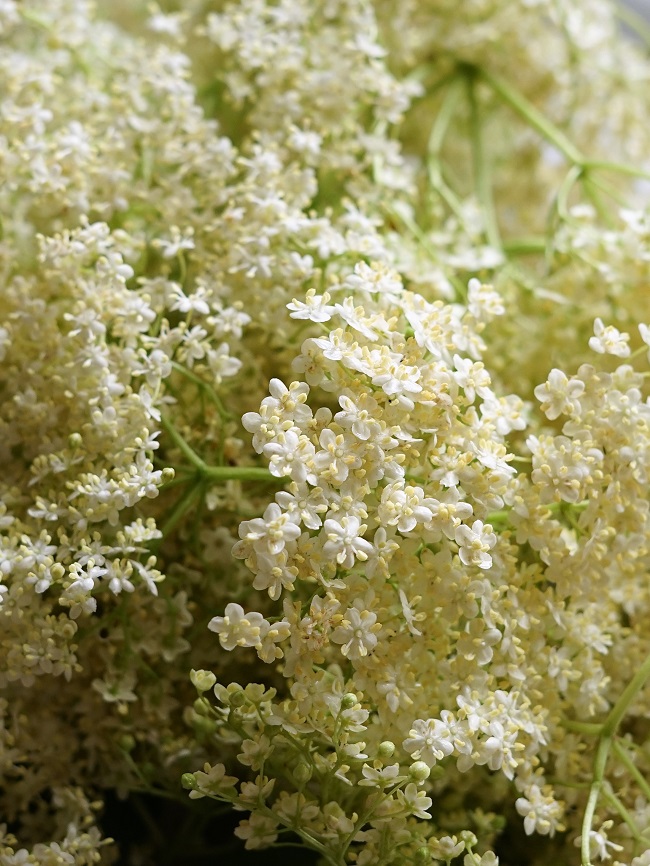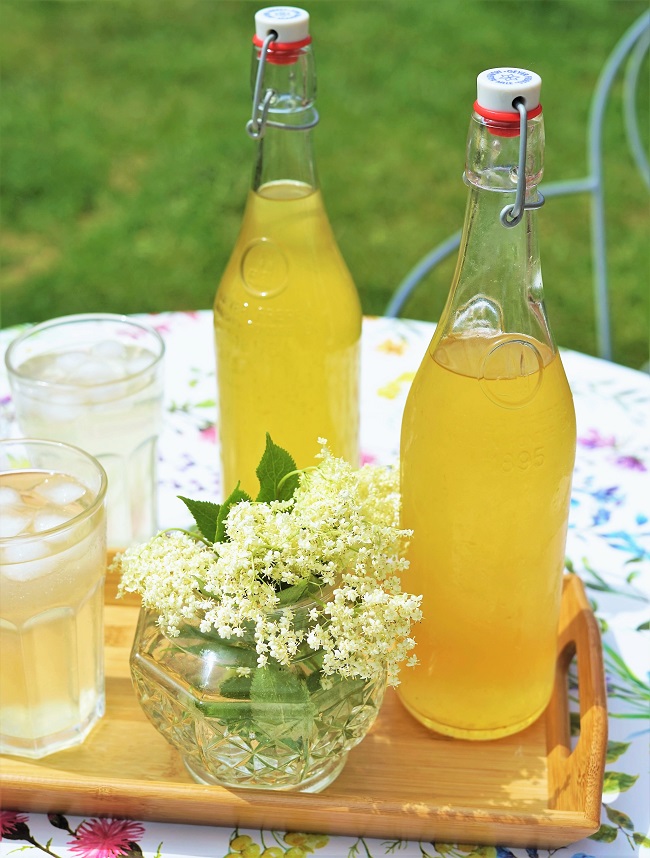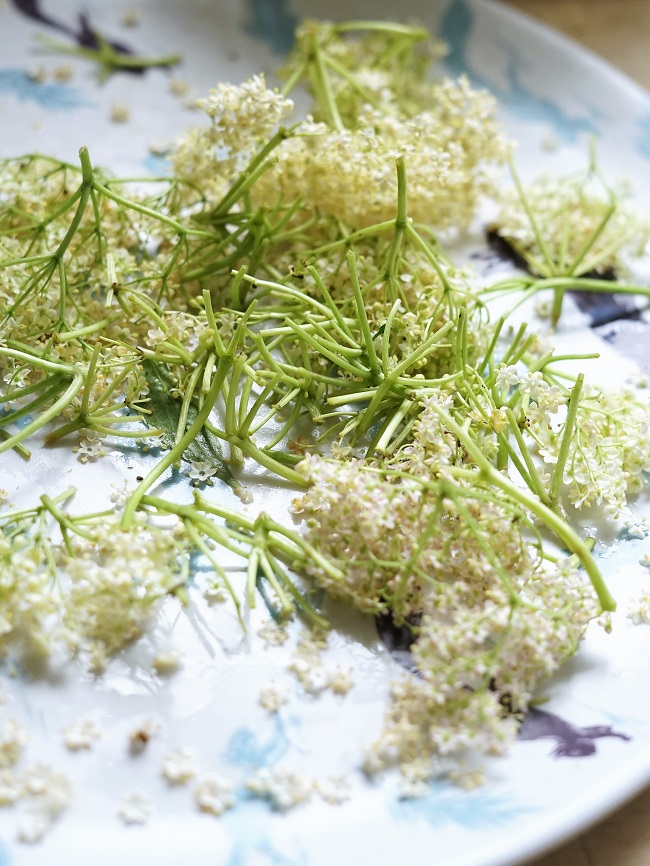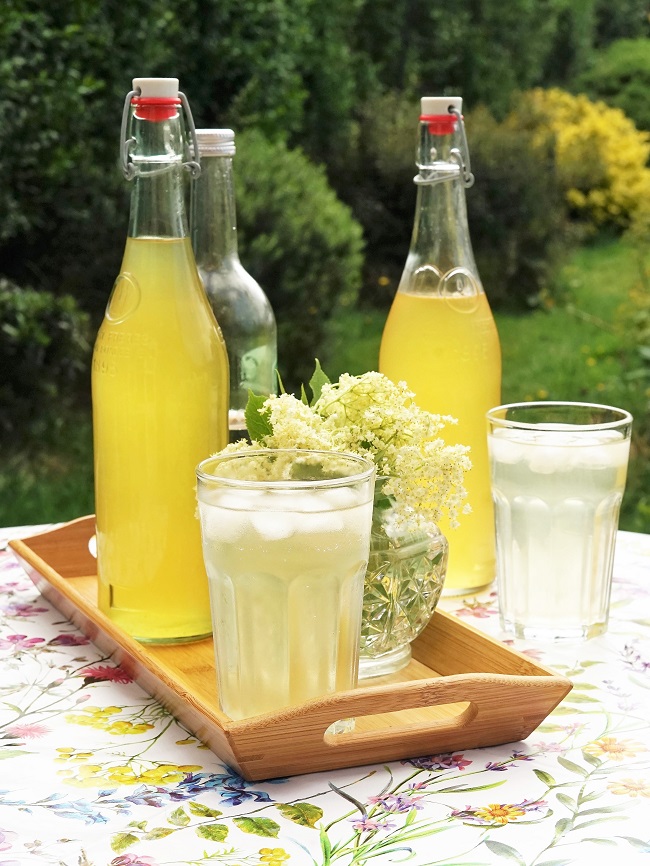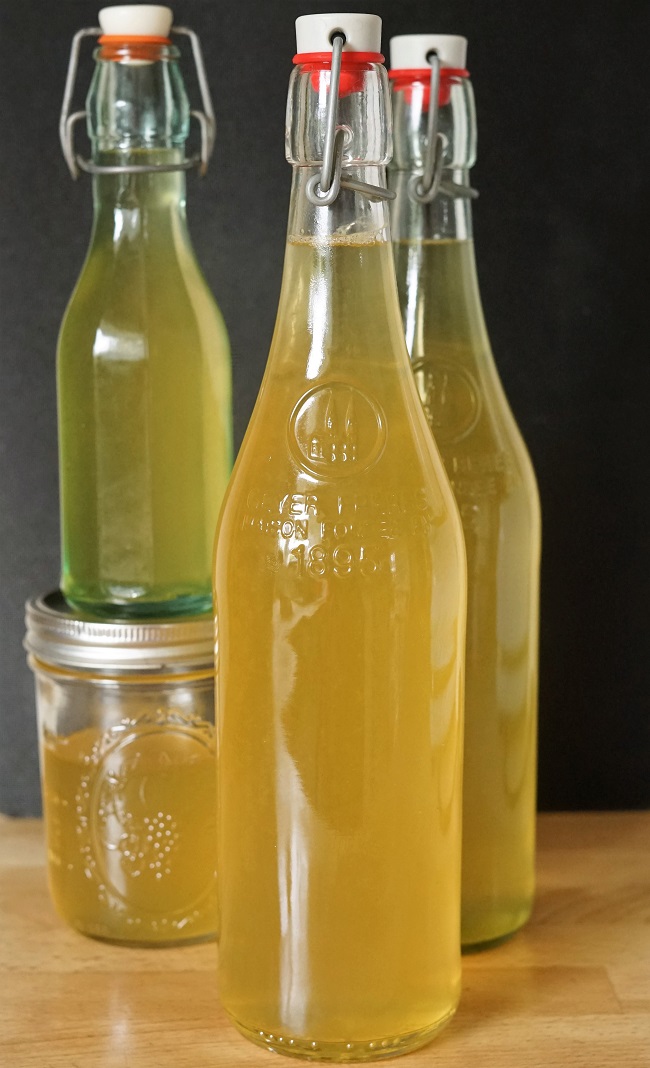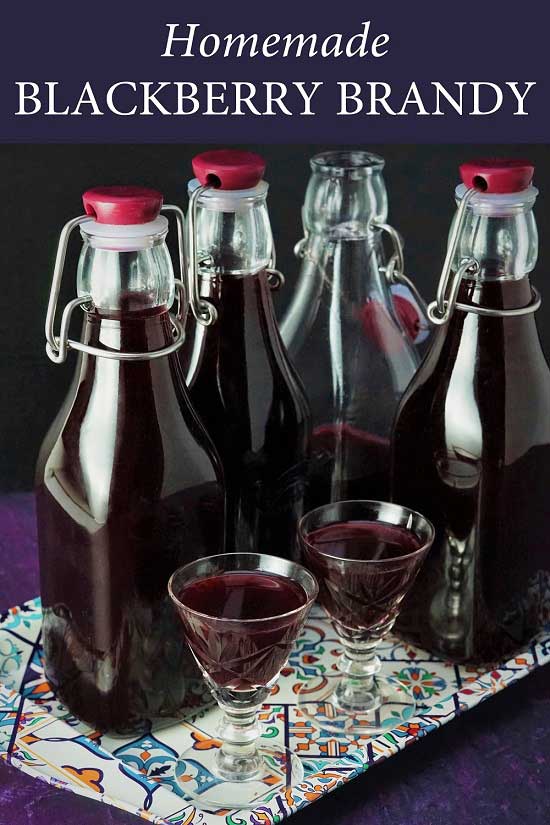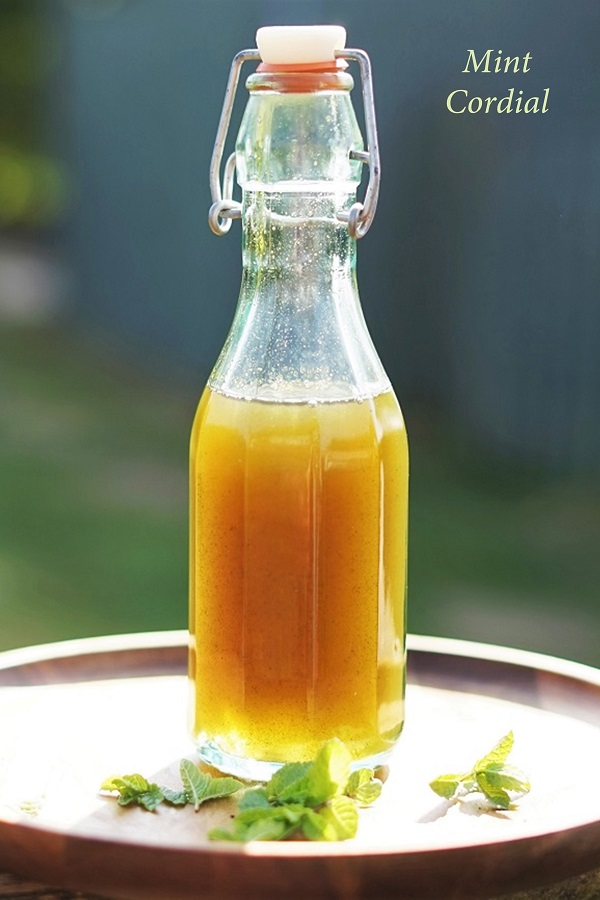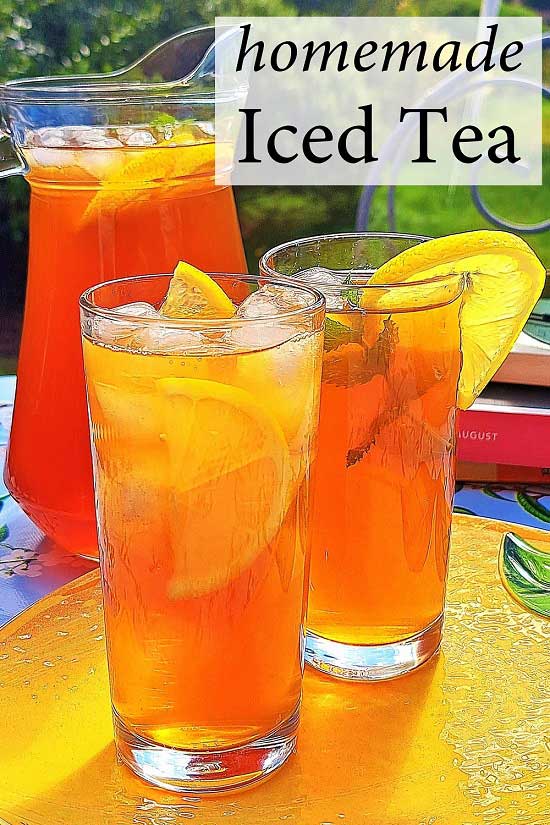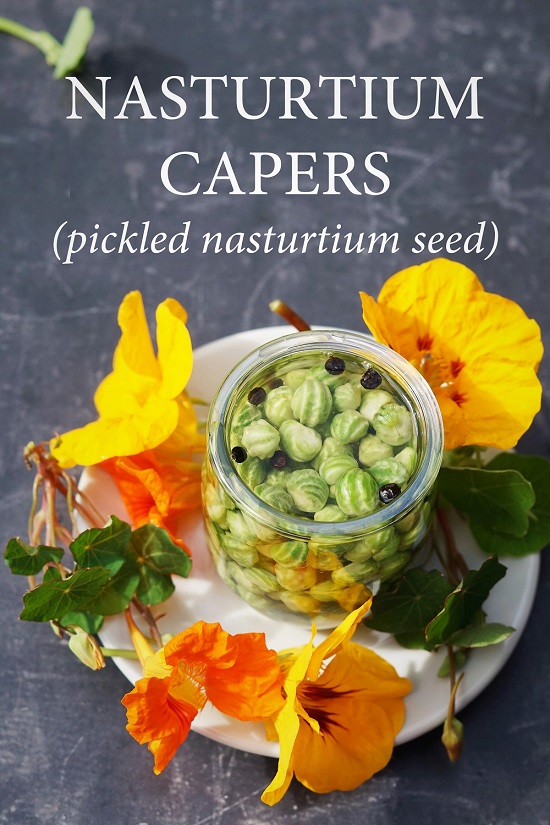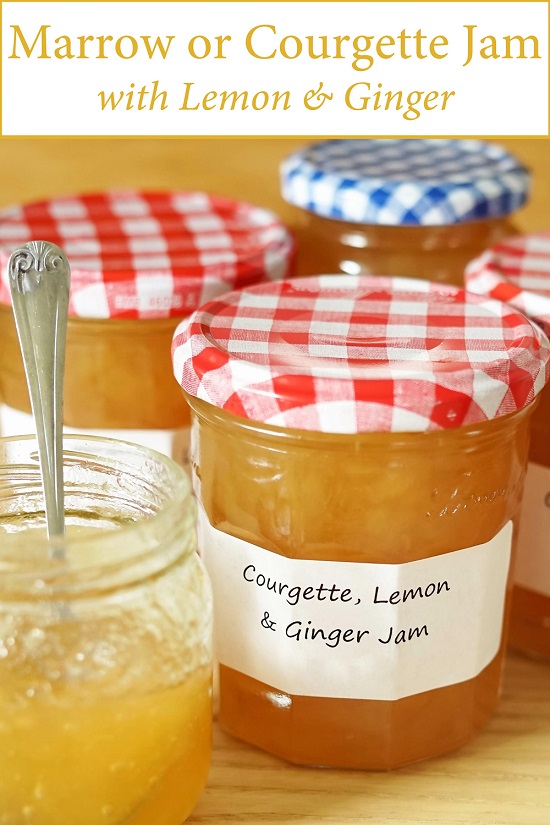Homemade Elderflower Cordial
Homemade Elderflower Cordial is simple and delicious. Make this delicately perfumed drink using foraged flowers found between late May and mid-June. Besides a bowlful of flower heads, the only other ingredients you’ll need are lemons, an orange, sugar and water.
Recipe adapted from River Cottage.
Jump to Recipe
I love elderflower cordial. I enjoy making preserves. So why was I a stranger to Homemade Elderflower Cordial until this year?
I think it was the success of my Mint Cordial that spurred me on. Not least because it reminded me just how easy homemade cordials are. Yes, you can buy elderflower cordial, and I often have. But the good stuff can be pretty pricey.
So, with an abundance of the beautiful creamy flowers growing just about everywhere in Britain between late May and mid-June, the time had come for me to have a go.
FORAGING FOR ELDERFLOWERS
First off, as with any foraging, you need to be one hundred per cent sure you know what you’re picking.
I’ll be the first to admit I’m not the greatest plant identifier. However, elderflowers, with their masses of pretty, tiny flowers in flat-headed sprays, I’ve known since I was a child.
There was a shrubby elder in our back garden and, ignoring the flowers, we’d wait for Autumn and pick the tart berries to eat. But I DON’T recommend this as I’ve since learned that raw elderberries are mildly poisonous.
As always, if you’re not familiar with a particular plant then it’s always best to go foraging with someone who is. Read about identifying elderflowers here

One of the best ways to confirm that it’s elderflowers you’re picking is to give them a sniff. If you know and love elderflower cordial, then the smell will be unmistakable. Particularly when you’ve a heap of them in your foraging bag.
If you’re sure it’s elder but the smell is a little unpleasant (some compare it to cat pee), then the flowers are past their best. Try to pick blooms not long after the tiny buds have opened, but before they start to develop any brown tinge. These will have the best flavour.
Oh, and don’t pick too many from one tree. Leave some for others and some to grow into elderberries.
PREPARING THE ELDERFLOWERS
You’ll need approximately 25-30 elderflower heads to make around 2 litres of Homemade Elderflower Cordial. As a guide, that amount almost filled my standard-sized kitchen mixing bowl.
As with my Dandelion Syrup, I found it best not to wash the flowers. You want to capture the precious pollen with all its flavour, not have it go down the sink.
So that any lurking creepy crawlies could extract themselves, I just left the flower heads on a tray in the kitchen for a bit.
As I didn’t want any odd flavours from the green elder stems to flavour the cordial, I snipped off and discarded any large ones. At the same time, I took the opportunity to ditch any blooms that didn’t look, and smell, up to scratch compared to the others.
HOMEMADE ELDERFLOWER CORDIAL
I browsed many methods for Homemade Elderflower Cordial. But the one that seemed to agree with my own instincts was that from River Cottage.
A large amount of recipes call for citric acid to extend the life of the cordial. But with River Cottage it was optional. This suited me as I was planning to enjoy the late Spring-early Summer flavours close to their natural season. There will be time enough for preserving other good things later: I’m already thinking about what to do with foraged blackberries.
Most recipes for Homemade Elderflower Cordial include lemon, which contains citric acid anyway, but also adds balancing tartness to the floral elements. The River Cottage recipe has orange as well as lemon and, as there was one in the fruit bowl, I added it to my mix too.
All you do to make the cordial is steep the flowers, along with the citrus zest, in boiling water. Some people say overnight, others twenty-four or forty-eight hours.
I started things off in the afternoon, as soon as possible after picking the elderflowers, then made the cordial late morning the next day. I did this simply because those timings were convenient, not because I was wedded to the idea of twenty hours.
Personally, I doubt you’d extract more of the delicate flower essence with longer steeping, so overnight may be sufficient.
Next day, after straining the liquid, you simply heat it with sugar and the juice from the lemons and orange. Once the sugar’s dissolved, give the cordial a little simmer to slightly thicken it. Bubbling for several minutes should also sterilize the cordial.
STORING
For storing, you’ll need some bottles which have been sterilized in the oven, just as you would when making jams and chutneys. If you haven’t done this before, don’t worry as instructions are in the recipe card at the end.
Using this recipe made 2 large bottles and 1 small bottle of cordial, plus a little extra which I just put into a handy jar as I knew I was going to use it almost immediately.
How much you’ll end up with will depend a little on how juicy your citrus fruits were, but mainly how much evaporates when you’re simmering the cordial.
Once your Homemade Elderflower Cordial is cold, it can go in the fridge. I didn’t have enough room for all mine, so temporarily put some in our utility room which is quite cool at the moment. I transferred them to the fridge as space became available.
I’ve found that cordials last at least a month in the fridge and often longer.
SERVING HOMEMADE ELDERFLOWER CORDIAL
I think the best way of drinking elderflower cordial is with sparkling water and ice. And preferably on a sunny day in the garden.
Soda water, ginger ale or fizzy lemonade are good too.
The ratio of cordial to water will obviously depend on both personal taste and the strength of your cordial. For this batch of Homemade Elderflower Cordial, I found that around one fifth cordial is about right.
You can also add a few drops of cordial to cocktails, or how about Elderflower Ice Cream? Simply churn together 200 ml each of milk and double cream plus as much cordial as you like: I used around 180 ml.
Have you made Elderflower Cordial? What’s your favourite way of using it?
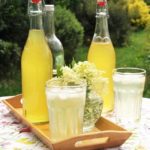
Homemade Elderflower Cordial
Simple & delicious using foraged flowers easily found in late May to mid-June, plus lemons, an orange, sugar & water. Dilute with sparkling water, soda water, lemonade, or use in puddings & ice-creams.
Should keep at least a month in the fridge.
Ingredients
- 25-30 elderflower heads, freshly picked
- 3 lemons
- 1 orange
- 1 kg sugar
Instructions
The day before you want to make the cordial
-
Lay the unwashed elderflower heads on a tray to let any bugs crawl out.
Remove any flower heads that look brown, snip off any larger, thicker green stems.
Put the kettle on to boil.
-
Put the elderflowers into a large, heatproof bowl. Grate the lemon and orange zest into it.
Squeeze the juice from the lemons and oranges and put it in a covered container in the fridge until the next day.
-
Pour 1½ litres of boiling water from the kettle over the elderflowers and zest.
Stir, then cover and leave overnight.
Making the cordial
-
Sterilize your bottles:
Wash your bottles and lids in hot, soapy water then rinse and drain them.
Put the oven on its lowest setting and place the bottles on a baking tray inside (lay on their sides if necessary).
Turn off the oven when the bottles are hot, but leave inside until the cordial is ready.
-
Line a sieve with a piece of folded cheesecloth or muslin and place the sieve over a large saucepan.
-
Tip in the contents of the bowl. Press down with a spoon to push all the liquid out of the elderflowers and zest, then discard them.
-
Add the reserved lemon and orange juice to the liquid in the pan, along with all the sugar.
-
Put the saucepan over a gentle heat, stirring occasionally until the sugar is dissolved.
Turn up the heat and simmer the cordial for 3-5 minutes.
-
Carefully pour the elderflower cordial into the hot sterilized bottles: use a jug or funnel if necessary.
-
Put on the lids and leave to cool before storing in the fridge.
Enjoyed this recipe? You may like these



